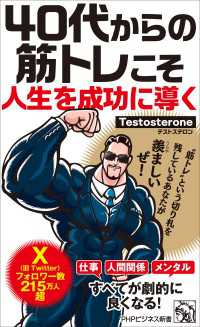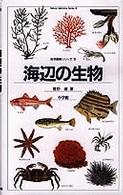Description
The Neuroscience of Pain, Anesthetics and Analgesics examines the syndromes of pain and how they interlink with anesthesia and analgesics. The book covers assessments, screening and resources, and provides applications to related areas of medicine. It explores how the perception of pain results from a multifaceted interaction between illness beliefs, age, gender, time of onset, stress, socioeconomic status, and other factors. In addition, it scrutinizes how the neuroscience of pain in one condition may be relevant to understanding pain observed in other conditions. Sections address the onset of pain, the cause of pain, and the administration of analgesia or anesthesia.The book works to clarify all of the subjects pertinent to anesthesia and the brain. Featuring chapters on neurotransmitters, pharmacology and brain imaging, this volume discusses the mechanisms of pain and experimental studies undertaken to better understand the pathways involved.- Includes content on the features and assessments of pain, anesthesia and analgesia- Provides a mini-dictionary of terms and summary points that succinctly encapsulate each chapter- Covers a broad range of topics related to the neuroscience of analgesics and anesthetics- Helps readers navigate key areas for research and further clinical recommendations- Features chapters on molecular pathways, imaging and a deep look at behavior associated with the experience of pain
Table of Contents
Features and Assessments of Pain, Anaesthesia and Analgesia:I. Setting the scene: General aspects of anesthesia, analgesics and pain1. The concept of multimorphic cancer pain: a new approach from diagnosis to treatment; 2. Recent advances in the linkage of attachment and pain: a new review; 3. The management of pain in older peopleFelicity; 4. Anesthesia and body mass: epidural depth and beyond; 5. Anesthetics and analgesic activities of herbal medicine: Review of the possible mechanism of action; 6. Analgesia-first sedation and multimodal analgesia in the intensive care unit; 7. The multidisciplinary Acute Pain Service: features and experiences; 8. Monitoring anaesthesia: EEG and beyhondII. The syndromes of pain9. Cluster headache and pain: features and treatments; 10. Migraine and pain: features and treatments; 11. Complex regional pain syndrome; 12. Phantom limb pain; 13. Painful diabetic neuropathy: The roles of microglia; 14. Maternal deprivation and nociceptiionIraci; 15. Giving birth and pain; 16. Abdominal Pain in Gastroparesi; 17. Appendicitis and related abdominal pain; 18. Ovarian hormones, site-specific nociception and hypertension; 19. Linking the heart and pain: physiological and psychophysiological mechanisms; 20. Chronic pain in military veterans; 21. Nociception during surgery; 22. Breast cancer and nociception; 23. Postoperative pain after rhinoplasty and rhinologic surgery; 24. Pain response, neonates and venipuncture; 25. Carpal tunnel syndrome and pain; 26. Pain and HIV; 27. Pain mechanisms in computer and smartphone usersIII. Interlinking anesthesia, analgesics and pain 28. Patients' and health professionals' positions regarding the use of analgesics in cancer cases; 29. Linking compression of myofascial trigger points and musculoskeletal pain; 30. Multimodal analgesia and post-surgical pain; 31. Pain, ultrasound-guided Pecs II block and general anesthesia; 32. Pain control during prostate biopsy and evolution of local anesthesia techniqes; 33. Pain reduction, in cosmetic injections: fillers and beyond; 34. Anesthesia and combat-related extremity injury; 35. Spinal anesthesia: applications to cesarean section and pain; 36. Postoperative Pain Management: Truncal blocks in thoracic surgery; 37. Postoperative Pain Management: Truncal blocks in general surgery; 38. Linking analgesia, epidural oxycodone, pain and laparoscopy; 39. Levobupivacaine features and linking in infiltrating analgesiaIV. Assessments, screening and resources40. The Pain Catastrophizing Scale: Features and Applications; 41. The Pain Behaviour Scale (PaBS); 42. The analgesia nociception index: features and application; 43. Back Pain Evaluation Questionnaire; 44. The Back Pain Functional Scale: features and applications; 45. Cognitive impairment, pain and analgesia; 46. Biomarkers in endometriosis-associated pain; 47. Biomarkers in bladder pain syndrome: a new narrative; 48. Biomarkers of statin-induced musculoskeletal pain: Vitamin D and beyond; 49. Performance-based and self-reported physical fitness as a powerful marker of musculoskeletal painTreatments, Mechanisms, and Adverse Reactions of Anesthetics and Analgesics:I. Drugs and agents used in anesthesia and analgesia1. Anesthesia for malignant hyperthermia susceptible patients; 2. Use of dextran in regional anesthesia; 3. Intraperitoneal local anesthetic agents in the management of post-operative pain; 4. Automatic control of anesthesia via different vital signs; 5. Non-opioid based analgesia in otolaryngologyII. Mechanisms of action of drugs6. Buprenorphine: mechanisms and applications; 7. Caffeine usage in pain management; 8. Chloroprocaine: features and applications; 9. Clonidine: features and applications; 10. An excursion into secondary pharmacology of fentanyls with potential implications for drug design: σ1 receptor; 11. Isoflurane: mechanisms and applications; 12. The lidocaine patch: features and applications: post-thoracotomy pain and beyond; 13.








